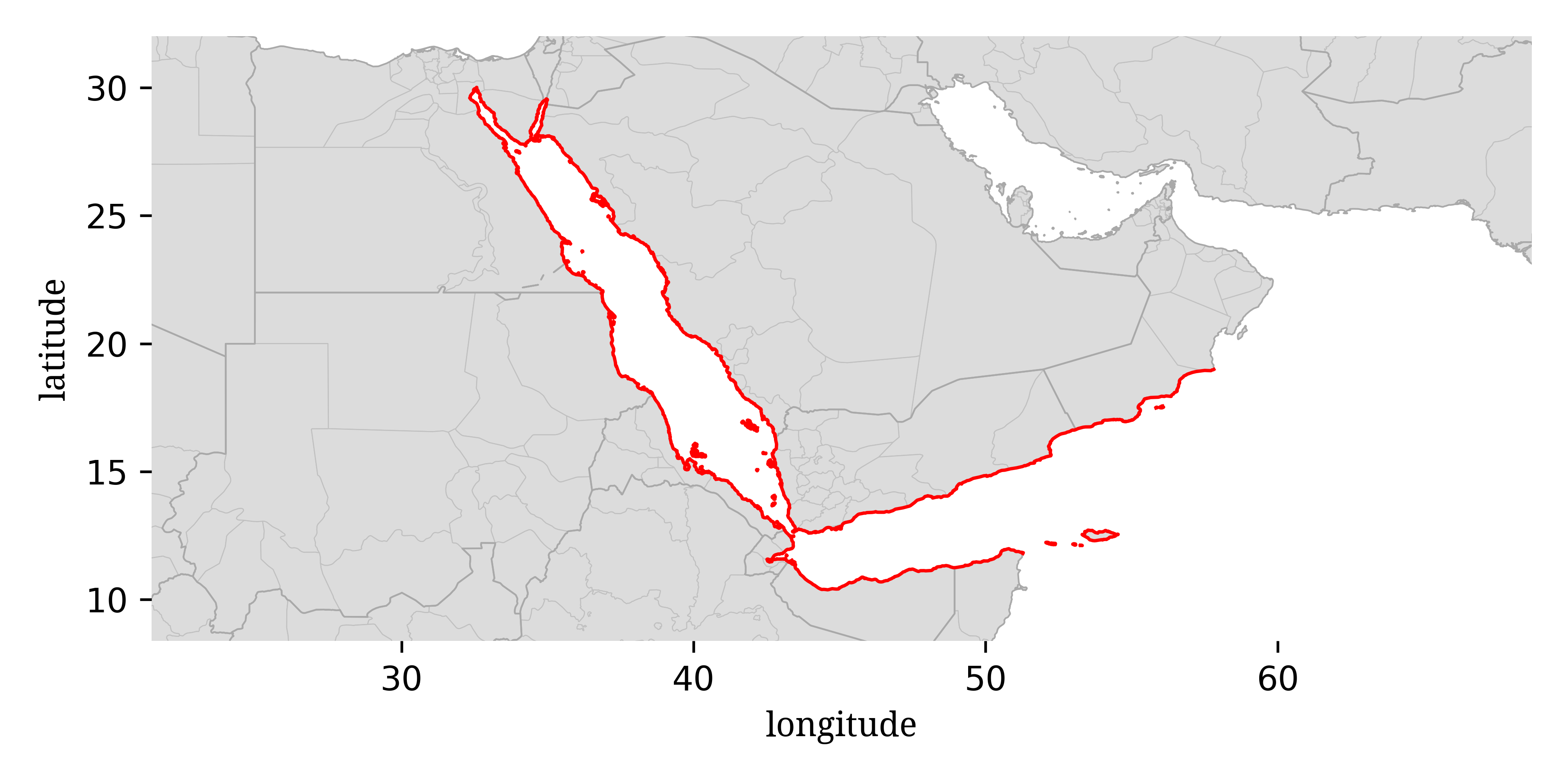
This guide is designed for identification “in the field” where you might be looking at live crabs by eye or through binoculars or from photographs. I will generally try to avoid characters that will require you to physically catch the crab, although I may mention a few for secondary verification. It does not include the more strict taxonomist-style characters that may only be visible under a microscope or via dissection. It is also assumed that the individuals are living, as death (and even capture) can cause dramatic color change.

This is a guide to the fiddler crabs of the Red Sea (including Egypt, western Saudi Arabia, Sudan, and Eritrea), Yemen, Gulf of Aden (including Djibouti and northern Somalia), and the southern half of Oman. Three species are predominantly found in this region, with possible rare sightings of two others. The three primary species are:
A number of features can be used to distinguish among these species, but a good place to start is to look at the distance between the base of the eyestalks. Fiddler crabs tend to split into two groups, those with the eyestalks very close together (“narrow front”) and those with the eyestalks separated a bit more (“broad front”). Two of these species (Austruca albimana and Cranuca inversa) are broad front species, while the other, Gelasimus tetragonon, is a narrow front species.

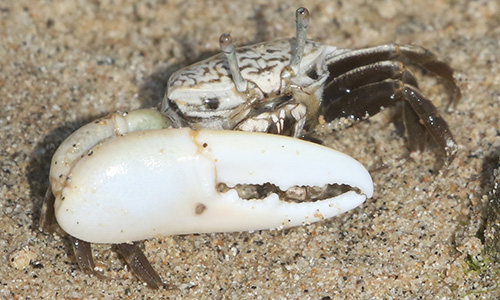
Although the distance between the eyes might be enough to distinguish Gelasimus tetragonon from the other two, it also generally quite different with respect to color. Gelasimus tetragonon tends to have a predominantly blue and black carapace, frequently speckled, and bright red legs (which occasionally may be darker). The large claw is generally orange, with a noticeably darker red spot near the base of the pollex. The dactyl (upper finger) is usually mostly white. Gelasimus tetragonon frequently has brown spots on the top part of the hand of the claw.
Gelasimus tetragonon has a lot of variability that can overlap with the other local species. In some cases, its carapace can lighten so that there is almost no blue, just a cream or pale orange with black markings. The pattern of the colors on the carapace can vary from stripes or blotches to tiny spots. The pale/white forms of Gelasimus tetragonon are more likely to be confused with the other two species, which are predominantly black and white, although they should still be readily distinguishable in most cases.


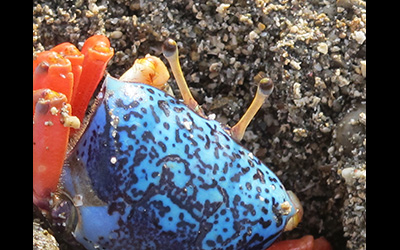
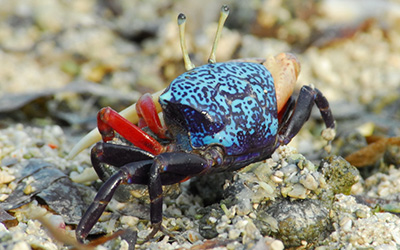
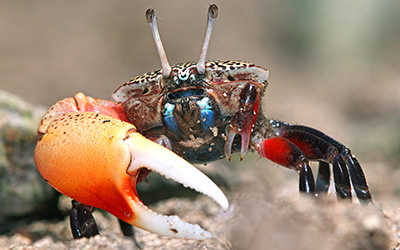
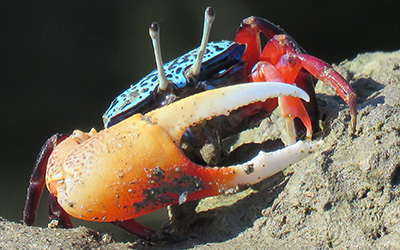
Evidence suggests that two other narrow front species, Gelasimus hesperiae and Tubuca alcocki, have been found in the Red Sea region, but both appear to be rare visitors rather than established. They are readily distinguishable from the three primary species included here, as well as each other, based on both color and the shape and structure of the large claw.
Male Cranuca inversa are easy to identify, provided one gets a good look at the large claw. In this species, the tip of the dactyl (the upper finger) on the large claw has a forked shape which is completely unique to this species. Compare the forked tip in the photos below to the tip of the large claw of the other species shown on this page.
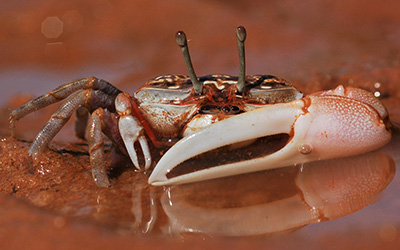
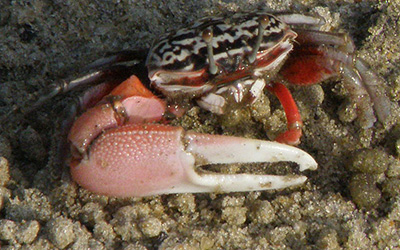
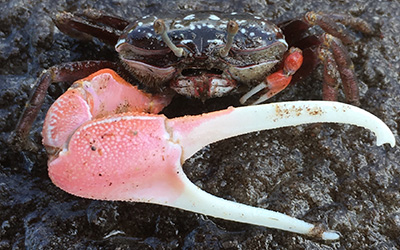
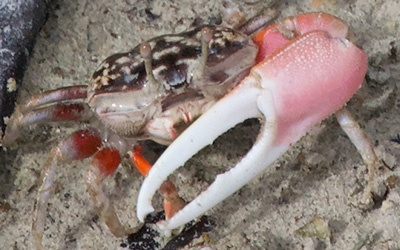
Beyond the shape of the dactyl tip, the “hand” and arm of the large claw tend to be pale pink, while the fingers are usually white. The carapace is generally a mix of black and white, usually—although not always—with more black than white. Unfortunately, this color scheme is very similar to Austruca albimana, so without a good view of the tip of the large dactyl, it can be difficult to distinguish between them in the field. To my knowledge, there is no reliable way to tell females of the two species apart in the field.
Austruca albimana is very similar in color to Cranuca inversa but has the standard pointed tip to the upper finger of the claw. Its carapace is generally white or a mix of white and black, its limbs range from dark red to white, and the arm with the large claw may be white or orange or red. More often than not, the large claw of Austruca albimana is entirely white, or at most has only a touch of pale color; in contrast, the large claw of Cranuca inversa usually has pink on the hand, although pure white claws have been observed.